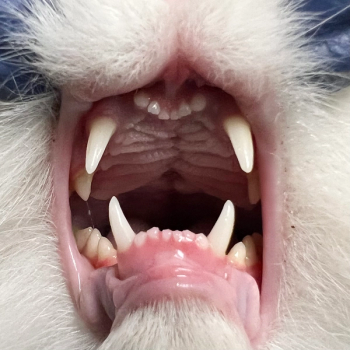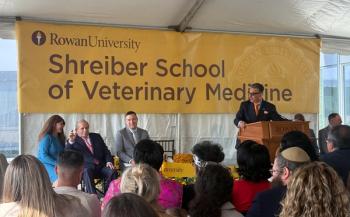
Surgery STAT: Regional antibiotic perfusion for treating infection in horses
Antibiotic therapy is an important component of treating infections, but its efficacy depends on achieving adequate tissue concentrations at the infection site.
Equine limb injuries often become infected (Photo 1). Antibiotic therapy is an important component of treating infections, but its efficacy depends on achieving adequate tissue concentrations at the infection site. Systemic administration of antibiotics may not reach ideal concentrations at the infection site because of vascular damage, decreased pH, fibrin deposition and exudate accumulation.
While not replacing adequate tissue débridement, regional antibiotic perfusion (RAP) is practical and cost-effective and increases antibiotic concentrations at the infection site.
Photo 1: An infected foot wound that will benefit from RAP.
How RAP works
RAP delivers antibiotic into the venous system for distribution to the region of the limb isolated by the tourniquet (see "How to perform standing RAP in a horse"). During RAP, antibiotic solution is infused under pressure, creating increased concentration gradients between capillaries and surrounding tissues, thus facilitating antibiotic penetration into the ischemic tissues and exudates. RAP promotes greater tissue concentration of antibiotic than might be achieved via systemic administration.
Antibiotic selection
Ideally, antibiotic choice is guided by results from a culture as well as susceptibility testing. Antibiotics used in RAP must be approved for intravenous administration. High tissue concentrations can be achieved with small doses of antibiotics; thus, antibiotics that are cost-prohibitive for systemic use can be used for RAP.
Concentration-dependent antibiotics (e.g., gentamicin, amikacin) are best for RAP because they have an increased killing rate above minimum inhibitory concentration (MIC) and a prolonged effect after administration. Time-dependent antibiotics (e.g., penicillin, ceftiofur) can be used but have a shorter duration of effect after perfusion.
When choosing an antibiotic for RAP in cases in which a dose has not been evaluated, a rough guideline is to use one-third of the systemic dose. Amikacin, 125 mg to 2 g, or gentamicin, 100 mg to 1 g, can be administered during one RAP treatment. If a similar class of antibiotics is simultaneously administered systemically and by RAP, care must be taken to avoid antibiotic toxicosis. In this case, it may be wise to delay systemic medication by one dosing interval.
Protocol and potential complications
The ideal frequency of RAP treatments varies depending on the extent of infection, bacteria involved, antibiotic selection and patient response. A typical RAP protocol might be once daily for three days, with further treatment dependent on the patient's progress. (For additional advice on successful use of RAP, see "4 tips for success.")
Complications from RAP are rare but can include the following:
- Tissue irritation
- Partial thrombosis of the perfused vein, especially with repeated use (although complete thrombosis is uncommon)
- Premature dislodging or removal of the tourniquet, resulting in flow of antibiotic to the systemic vasculature before achieving adequate tissue concentrations.
In addition, catheters are difficult to keep in place for a long duration and may require replacement.
Dr. Kramer
Conclusion
RAP can be a practical and cost-effective method to increase tissue concentrations of antibiotic at infection sites. In cases of deep or long-standing infections, RAP may be an adjunct to aggressive traditional treatment. However, in cases with less extensive infections, RAP may be the primary method of antibiotic delivery.
How to perform standing RAP in a horse
SUGGESTED READING
1. Wilson D, Branson K, Kramer J, et al. Distal limb perfusion. In: Manual of equine field surgery. St. Louis, Mo: Saunders Elsevier, 2006;55-59.
2. Santschi EM, Adams SB, Murphey ED. How to perform equine intravenous digital perfusion, in Proceedings. 44th Annu Meet Am Assoc Equine Pract 1998;44:198-201.
Dr. Kramer is an ACVS board-certified veterinary surgeon whose clinical interests include finding minimally invasive and practical solutions. She currently is an assistant teaching professor of equine surgery in the Department of Veterinary Medicine at the University of Missouri-Columbia's College of Veterinary Medicine.
Newsletter
From exam room tips to practice management insights, get trusted veterinary news delivered straight to your inbox—subscribe to dvm360.






